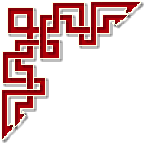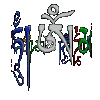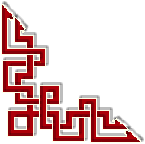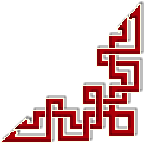 |
Vajrayana Buddhism - Buddhist Books |
|

| The
mysteries of Tantra have engrossed countless mediators for centuries. Since
the time of Buddha, these secrets have been passed down from accomplished
master to disciple largely by word of mouth.
Now drawing from his own experience and the works of Je Tsongkhapa and other great Tibetan Yogis, Geshe Kelsang clearly sets out all the stages of the four classes of Tantra, giving a full explanation of generation and completion stages. Tantra is revealed as the gateway to a blissful new world. The book represents a significant
milestone in revealing these profound mysteries to the contemporary world.
|
|

| This
volume is part of a series of three books devoted to Tibetan Buddhism as
seen through the teachings of one of the most revered masters of modern
times, Kalu Rinpoche. The complete three-volume work is composed of:
Excellent Buddhism Profound Buddhism Secret Buddhism
The first volume, Excellent Buddhism, contains a number of biographical documents on Kalu Rinpoche, notably the remarkable memories of Lama Gyaltsen. The first volume also contains teachings dealing more specifically with daily life and with the relationship between Buddhism and the West. The second volume, Profound Buddhism, presents the teachings on Hinayana and Mahayana as esoteric aspects of Buddhism. Profound Buddhism expounds on the absolute nature of mind, emptiness, and compassion; dealing with conflicting emotions; the situation of the individual in the cycle of existence; and karma. Finally, the third volume, Secret Buddhism, reveals the principles of Vajrayana, mantras, empowerments, the six yoga's of Naropa, and so on. It includes important chapters on the bardo (the period of time between death and rebirth), Tibetan medicine, and initiation lineages. Kalu Rinpoche, Lama of Light, came to France for the first time in 1971. Tibet, an inaccessible stronghold of highest spirituality, had remained separate up to this time, on the grounds that the rest of the world could not understand her. Kalu Rinpoche, then almost 70 years old, was the first, despite the skepticism of the majority of his peers, to believe that Tibetan Buddhism could have an impact in the West. History proved that he was right. He taught many people during numerous trips until his death in 1989. A great number of them were captivated by his charismatic radiance and set out on the path of liberation. Kalu Rinpoche is no longer with us, but the wealth, depth, and diversity of his recorded teachings remain. Unfortunately, these recordings
are not accessible to the public. Not only is the lamp kept in the dark, but
this treasury runs the risk of becoming lost. Reflecting on this situation,
Lama Gyaltsen, who was for 40 years Rinpoche's servant and then his
secretary, asked us to collect and edit all the available teachings of Kalu
Rinpoche.
Read more |
|

| Here two
Western-born lamas of the Nyingma tradition of Vajrayana Buddhism explore
what it means to be utterly emotionally alive. Written in contemporary,
nonacademic language, this book is a radical challenge to the misconception
that inner Vajrayana is primarily an esoteric system of ritual and liturgy.
The authors teach that emotions can be embraced as a rich and profound
opportunity for realization. This fiercely compassionate battle cry rallies
all who are audacious enough to appreciate emotions for their supreme
potential as vehicles for awakening.
Read more |
|

| This
book is an explanation on how to practice Heruka's body mandala. The author
has explained in detail so the reader is able to follow through on a
extensive practice. If you are a tantric practioner that needs some guidance
from a qualified teacher this is the book for you. In the back of the book
there is a few sadhana that coordinate with the teachings. The book is quite
advanced. If you are a beginner in Buddhism this is probably not a good
first book to read. Try Universal Compassion by the same author.
Read more |
|

| Based on
oral teachings received by the author, as well as authentic works from great
masters like Je Tsonkhapa and the first Panchen Lama, this book provides a
detailed and precise explanation of the completion stage practices of
Tantric Mahamudra. It takes the reader from the initial Meditation on the
Subtle Body, through Inner Fire Meditation, to the final attainment of Full
Enlightenment. Some of the topics include: Channels, Winds, and Drops, Clear
Light and the Four Joys, Nine Mixings and the Two Mudras, the Nature of
Mind, instructions to achieve Tranquil Abiding, Meditation on Emptiness, the
Illusory Body, Clear Light and Union, and Resultant Mahamudra. Although the
main purpose of this book is to explain the advanced practices of Mahamudra,
students of different levels will benefit from the clear and practical
explanations and instructions on many aspects of Vajrayana Buddhism. These
include foundational issues, like how to develop meditative concentration,
and how to meditate on emptiness. It also answers question like "what causes
the dream body to enter the gross body when we wake from the dream state?"
And on to instruction on how to mix with the Truth Body, Enjoyment Body, and
Emanation Body during death. One gets as much out of this book as one is
capable of, and cannot help but being inspired by it. Geshe Kelsang Gyatso
Rinpoche has been residing and teaching in the West for more than twenty
years, transmitting ancient wisdom to the modern world. A fully accomplished
Tantric Master, he wants this book to especially benefit the Western Dharma
practitioners. First published in 1982, this book is already a classic. The
writing is simple and direct. The explanations and instructions are
extremely clear, leaving nothing to guesswork. Especially valuable for the
practitioners, are the superb and unparalleled descriptions of the inner
states. Making this book more than just a philosophical discourse or a
reference, but a veritable guide.
Read more |
|

| The
author has done the world of Vajrayana Buddhism a true service by writing
this book. I knew early on in the book that I was going to enjoy it
immensely. The kind, respectful, gentle way the author speaks about his
teachers, and how they in turn speak of their teachers, was really
inspiring. To me, that type of relationship with one's teacher(s) is the
distilled essence of the Vajrayana Path.
About his teachers, he says, "...the debt I owe them for the entire content and quality of the life I now lead. This is a debt which, in the nature of Vajrayana, cannot be less than total. It will always remain beyond the possibility of repayment. This is a typical Tantric paradox--a debt that buoys me up rather than weighing me down." The author speaks of the Dalai Lama of Tibet telling us we can take up to 13 years to decide if a certain teacher is right for us. Rigdzin Dorje says a Teacher-Student relationship is not something to be entered into lightly. Once you do accept a teacher, the commitment should be complete. When the activities of the teacher are inconsistent with your particular viewpoint, Dorje states, "However incomprehensibly the teacher may behave, always maintain pure perception, and recognize his way of doing things as skillful means. Pure vision means viewing the vajra master as continuously acting for the benefit of beings, and regarding all of his or her behavior as manifestations of unceasing enlightened activity. The vajra master represents the completion of the path in person." Whether you are a long-time Varayana practitioner, or someone who is seriously thinking of choosing a teacher, or even someone who interested in this particular path, I highly recommend this book. Read more |
|

|
Padmasambhava, also known as Guru Rinpoche, is credited as being the main
person who brought Buddhism to Tibet, and is also understood by Tibetan
Buddhists to have been a Buddha himself.
In some contexts, one approaches teachings directly at their source first, and then looks to commentaries, explanations, etc. For example, in Protestant Christianity, one is often encouraged to go straight to the New Testament and read that. Then one reads the works of theologians, biblical scholars, preachers, and so on. However, in Buddhism the approach is often the opposite. First one goes to a teacher who is a contemporary of yours. Then, having gained some confidence from that teacher, and having put into practice some of the teachings and having seen their effectiveness and practicality, one then turns to some other writings of an introductory nature. After having gained some grounding in those, one may then turn to a commentary on a root text. Then, one may read the root texts oneself. Lastly, one may turn to the sutras and words of the Buddha himself. Trying to start there, however, would not be advised -- as anyone who has tried to read the Tripitaka (the three baskets of teachings of the Buddha) or the tantras can attest! Similarly in the case of this text -- one should have a good grounding before attempting very difficult texts, and they should in all cases be read while one is studying with a lama. Otherwise, misunderstandings may occur, and these may be worse than not having encountered the text in the first place. But if one does have that grounding, what greater treasure is there than to read such wonderful texts? Read more |
|

| This
book consists of a text by Karma Chagmey, one of the founders of the Palyul
division of the Nyingma school of Vajrayane Buddhism. At first I was put off
by it, since it implicitly promises to discourse on the principles of not
one, but two, sublime paths, Dzogchen _and_ Mahamudra; then after going
through a pretty normal (for Vajrayana texts) progression through the four
thoughts that change the mind, etc., becomes a discourse on Guru Yoga with
Chenrezig as the Lama. In other words, there is a faint sense of having
shown up for the lecture and having to begin at the very beginning and
patiently work up to the real juicy parts. This attitude, of course, is one
of our major obstacles in the West to really appreciating the "advanced
teachings." We want them, but don't want to go through the boring parts. On
re-reading the text, however, I found it very charming and down to earth. It
made my practice feel more centered by getting me back to basics (refine the
details) while keeping the goal (the sublime) in mind. As an overview of all
of the essentials of the path, it also helps my Ngondro. Sort of puts things
into a kinder, gentler perspective. I now find it a great companion on
trips, being relatively thin (for packing and carrying in a camera bag or
pack), written in everyday (to the extent this is possible) language and
lacking in pretension. Chokyi Nyima's comments are also helpful, and he does
occasionally drop in the technical tidbit we all long for. Finally, if you
have any Palyul empowerments, it is great to see a book written around the
lineage founder's text. It is great to know the founder was kind and had a
sense of humor, and especially that he encouraged lay practitioners.
Read more |
|

|
I read Reginald Ray's "Indestructable
Truth", the first volume in his "World of Tibetan Buddhism" series, last
summer while camping in the Sierras. I was fascinated by the account of the
various masters, lineages, stories and practices of the Tibetan Buddhist
religion, and was left wanting more.
With "Secret of the Vajra World: The Tantric Buddhism of Tibet", I got what I wanted. Here Ray has delivered exactly what someone who holds the title "senior teacher" (Acharya) should- he shows the reader the history and philosophy of the Tantric path in as much detail as a single book can allow. He discusses the Vajrayana lineages of Tibet, with special emphasis on the Nyingma and Kagyu. He tells us tales of the Mahasiddhas- individuals like Padmasambhava, Tilopa, Marpa, and (my favorite), Milarepa. He discusses the institutionalization of the Tantra as the Vajrayana, the "third yana" of Buddhism (along with the Hinayana and Mahayana). Ray then goes on to discuss the philosophy behind the Vajrayana and how it developed out of Nagarjuna's Madhyamika philosophy and the work of "forest adepts" (siddhas) in Northern India in the 7th-8th centuries. He discusses the sadhanas that make up the basis of Tantric practices, as well as the six internal yogas of Naropa, the Mahamudra, and the Dzokchen teachings. He then concludes the book with a discussion of the Tulku tradition, death practices, reincarnation, and the peculiar events surrounding the death of the Karmapa in 1981, as well as the peculiar events surrounding the birth of Chogyam Trungpa Rinpoche (I was also happy to hear that a new Trungpa Tulku has been discovered and is in training). Ray doesn't even shy away from discussing the Dzokchen "Rainbow Body" and the passing of realized masters into the samboghakaya, no matter how much this seems to conflict with modern materialist beliefs. The Siddhas weren't just mythical
adepts who lived many centuries ago- it's just as possible to become one
today. In a world sorely in need of transcendental aspirations beyond
insipid materialism and potential-denying Christianity, Tibetan Buddhism,
mysteriously enough, provides a vision that takes us beyond the modern,
postmodern, and premodern world- and into a world of unlimited spiritual
possibilities. Read Ray's "World of Tibetan Buddhism" series, and you'll
understand why.
|
|

| Great little book on Mahamudra--my favorite one. I read it a long time ago; it succeeded in getting me seriously interested in Mahamudra. It amazes me how sometimes so much can be said in a very short space while other times (and authors) can say so little in a very large space! This one is short and sweet. Read more | |



